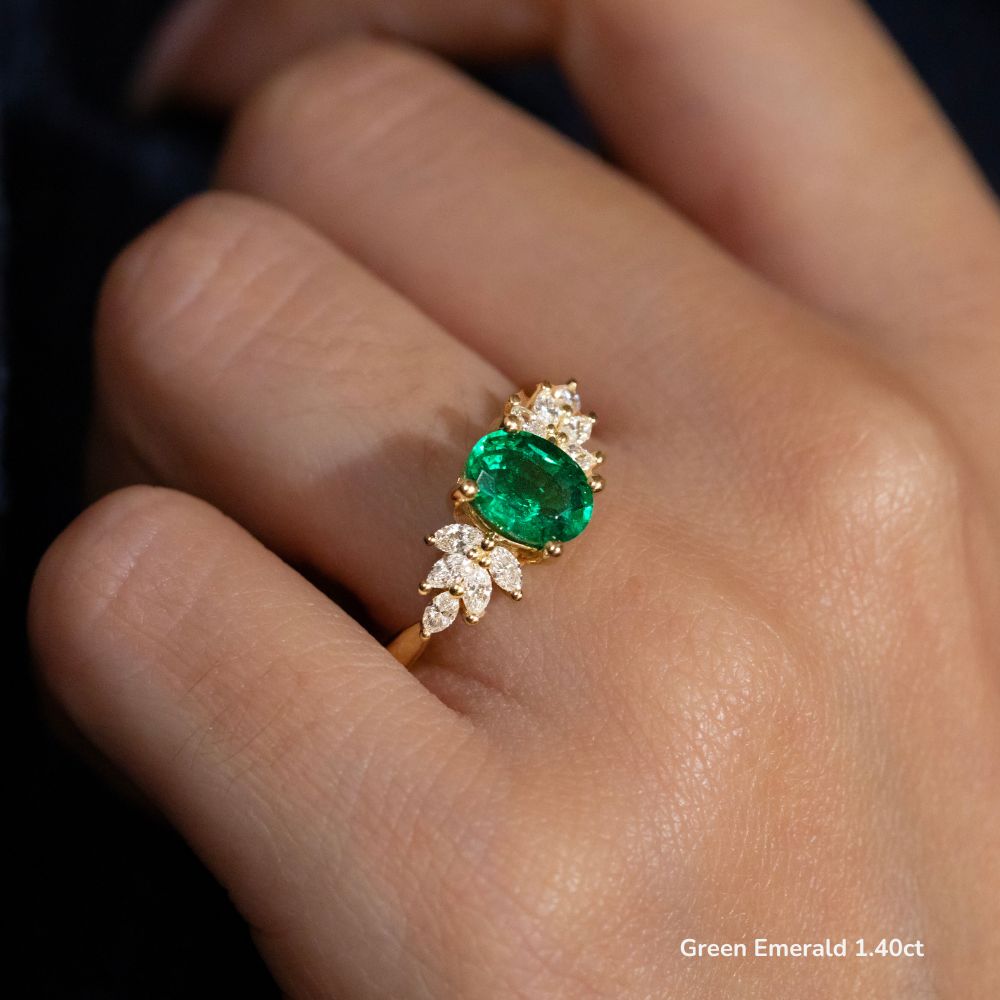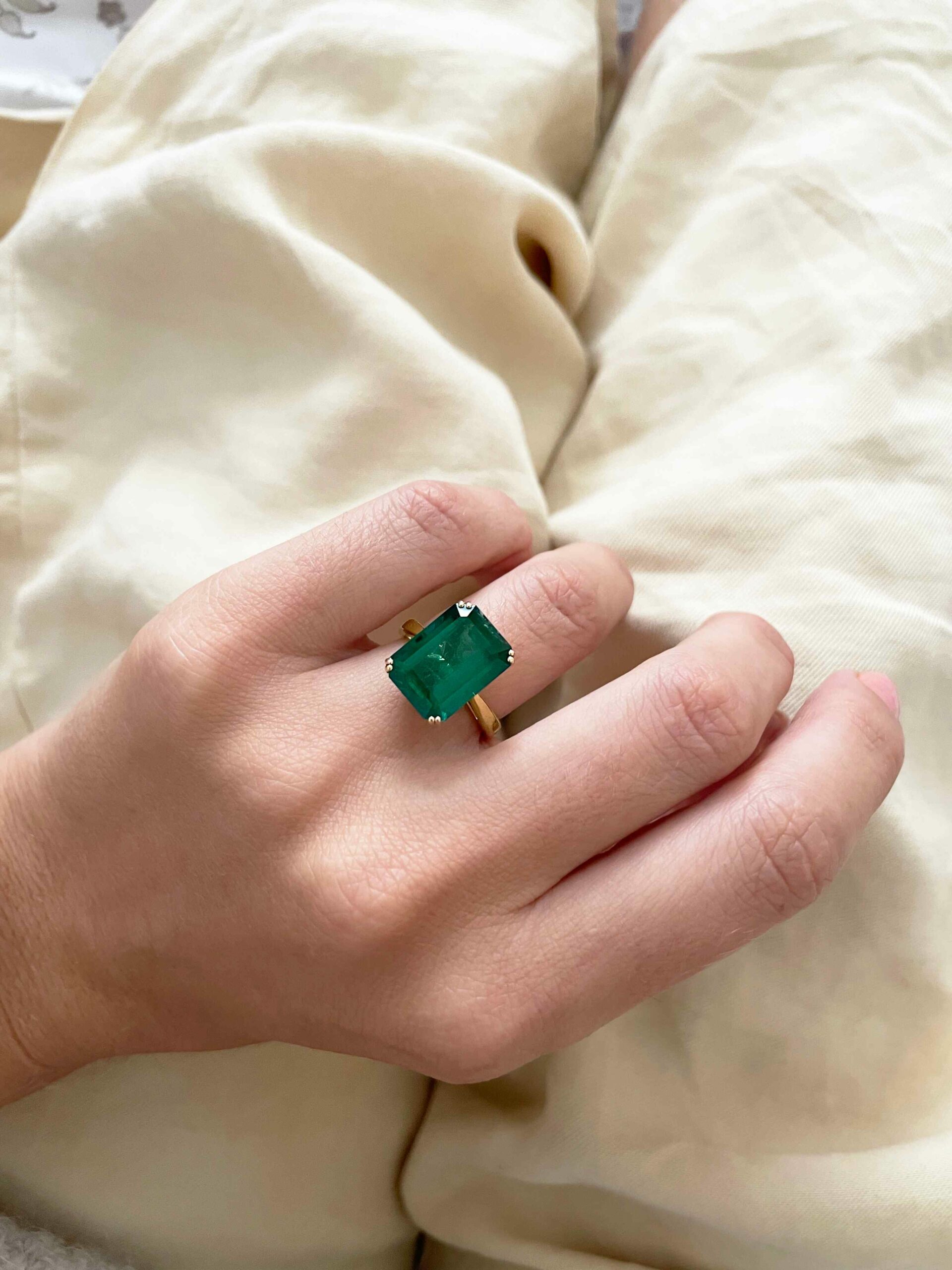
12 Mar 2025 — by Flawless Fine Jewellery — Reading time 12 minutes
The Complete Emerald Guide: From Mines to Masterpieces
The Knowledge You Need To Find Your Perfect Gemstone
Introduction
Emerald is a precious gemstone belonging to the beryl mineral family, known for its vibrant green colour. Its hue ranges from deep forest green to lighter shades, depending on trace amounts of chromium and vanadium.
Renowned for their beauty, rarity, and historical significance, emeralds have been treasured for centuries. Their deep green colour symbolises wealth, renewal, and prestige, making them a favourite among royalty and collectors.
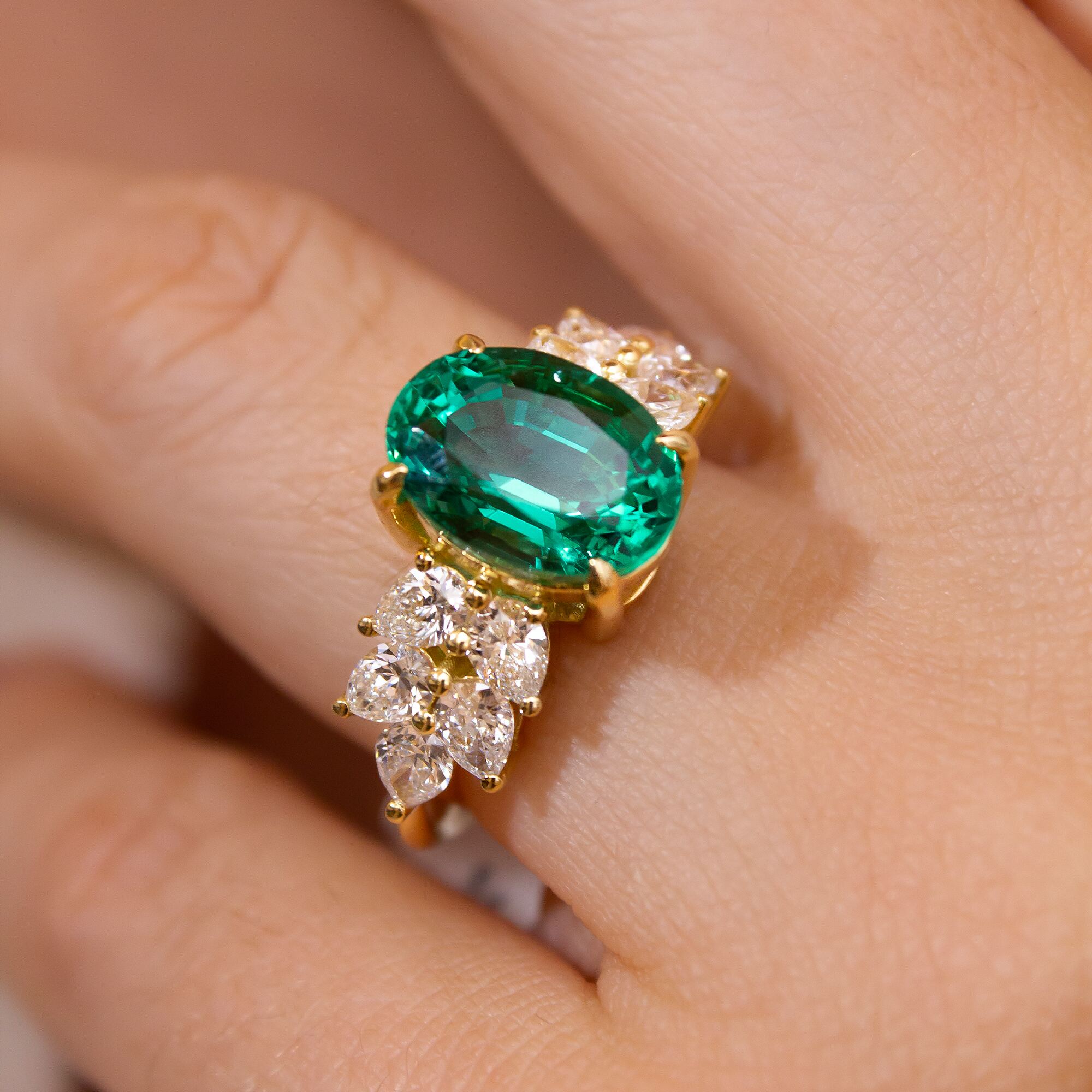
Topics covered:
The Formation and Sources of Emeralds
Characteristics and Quality of Emeralds
The Value and Pricing of Emeralds
Emerald Treatments and Enhancements
Choosing and Buying an Emerald
Emerald Jewelry and Design
Caring for Your Emeralds
Myths, Symbolism, and Astrology
Famous Emeralds and Their Stories
FAQs About Emeralds
The Formation and Sources of Emeralds
How Emeralds Are Formed in Nature
Emeralds are formed under extreme geological conditions when beryllium, aluminium, silicon, and trace elements like chromium and vanadium combine under high pressure and temperature. This process takes millions of years, creating emerald crystals within metamorphic and igneous rocks.
Major Emerald Mining Locations
Colombia – The world’s leading emerald producer, known for its deep green, high-quality stones from mines like Muzo, Chivor, and Coscuez.
Zambia – Produces rich green emeralds with excellent clarity, often containing fewer inclusions than Colombian gems.
Brazil – Offers a wide variety of emeralds, including lighter green stones and unique bluish-green specimens.
Other Sources – Notable deposits are also found in Russia, Afghanistan, Ethiopia, and Madagascar.
Ethical Sourcing and Sustainability
With rising concerns over ethical mining, responsible sourcing initiatives ensure fair labour practices and minimal environmental impact. Buyers should look for certified emeralds from reputable suppliers to support sustainable mining efforts.

Characteristics and Quality of Emeralds
Colour – The most crucial factor. The finest emeralds have a vivid, evenly distributed green hue.
Clarity – Natural inclusions (“jardin”) are common. Eye-clean emeralds are rare and valuable.
Cut – Enhances colour and brilliance. The emerald cut is the most popular.
Carat – Larger, high-quality emeralds are rare and expensive.
What Makes a High-Quality Emerald?
– Rich green colour with good transparency.
– Minimal visible inclusions.
– Well-proportioned cut to enhance beauty.
Natural vs. Synthetic Emeralds
– Natural – Formed over millions of years, rare and valuable.
– Synthetic – Lab-created, identical in structure but less valuable.
– Identification – Certification (e.g. GIA) ensures authenticity.
The Value and Pricing of Emeralds
Factors Affecting Emerald Pricing
Colour – The most significant factor; deep, vibrant green emeralds command the highest prices.
Clarity – Fewer visible inclusions increase value, though some are expected.
Cut – A well-cut emerald enhances brilliance and maximises colour.
Carat – Larger emeralds with high quality are rare and significantly more expensive.
Comparing Emeralds with Other Green Gemstones
Emerald vs. Peridot – Peridot is lighter and less valuable.
Emerald vs. Green Tourmaline – Tourmaline has a different crystal structure and lower value.
Emerald vs. Tsavorite Garnet – Tsavorite is rarer but lacks emerald’s historical prestige.
Investing in Emeralds
– Colombian emeralds are the most sought-after.
– Certified stones from reputable sources hold better value.
– Untreated emeralds are more valuable than treated ones.
Treatments and Enhancements
Common Enhancements
Oiling – The most common treatment, using colourless cedarwood oil to fill fractures and improve clarity.
Resin Filling – Some emeralds are treated with synthetic resins for durability and enhanced appearance.
Dyeing – Lower-quality emeralds may be dyed to enhance colour, but this reduces value.
How to Identify Treated vs. Untreated Emeralds
Most emeralds undergo some treatment; untreated stones are rare and highly valuable.
Professional gemological testing (e.g. GIA certification) confirms treatment levels.
Inspecting under magnification can reveal filled fractures or colour inconsistencies.
Impact of Treatments on Value
Light oil treatment is accepted in the industry but still affects value.
Heavy treatments (resin filling, dyeing) significantly lower an emerald’s worth.
Always buy from reputable sellers with full disclosure of treatments.
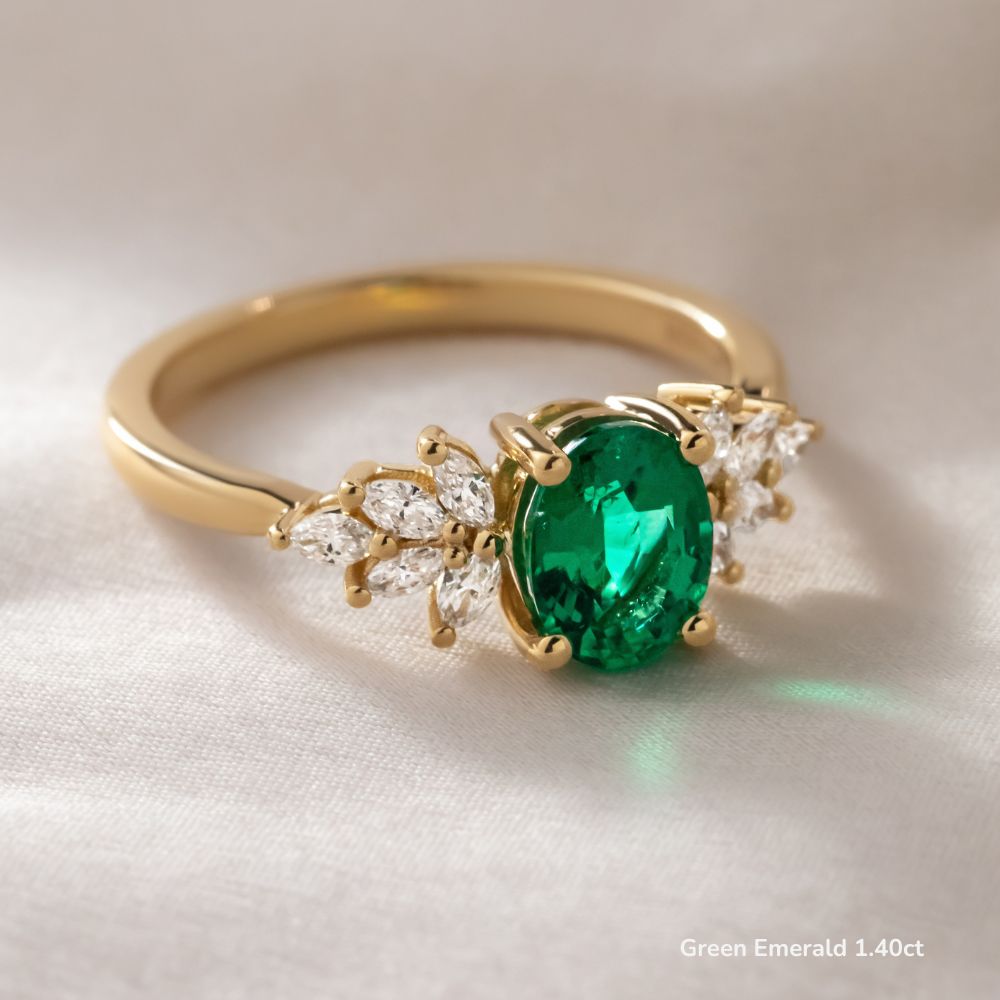
Choosing and Buying an Emerald
Choosing a Genuine Emerald
Rich, even green colour with good clarity.
Well-cut to enhance brilliance.
Certification and Grading
Buy certified emeralds (GIA, IGI, AGL) to confirm authenticity and treatments.
Where to Buy
Retail Stores – Trusted jewellers with certification.
Auctions – Rare, high-value emeralds.
Online – Reputable sellers with return policies.
Emerald Jewellery and Design
Popular Emerald Cuts and Shapes
Emerald Cut – Classic, rectangular shape enhancing colour and clarity.
Oval & Round – Maximises brilliance and suits various jewellery styles.
Pear & Cushion – Elegant options for rings and pendants.
Famous Emerald Jewellery Pieces
Cleopatra’s Emerald Collection – Cleopatra, the legendary Egyptian queen, was known for her love of emeralds. These gemstones symbolised power, wealth, and divine protection in ancient Egypt, where they were often used in royal adornments and ceremonial jewellery.
The Chalk Emerald Ring – One of the most celebrated emeralds in history, the Chalk Emerald is a magnificent 37.8-carat Colombian gemstone, set in a platinum and gold ring surrounded by diamonds. Currently housed in the Smithsonian Institution, this emerald is renowned for its deep green hue and exceptional clarity.
The Mogul Mughal Emerald – This extraordinary 217.8-carat emerald, dating back to the 17th century, is engraved with Islamic prayers on one side and floral carvings on the other. It reflects the opulence of the Mughal Empire and is considered one of the most historically significant emeralds in existence.
How to Style Emerald Jewellery
Pairing with Other Gemstones – Emeralds complement diamonds beautifully, creating a striking contrast that enhances their vibrant green colour. They also pair well with sapphires for a regal look or with pearls for a softer, vintage aesthetic.
Choosing the Right Metal – Yellow gold enhances the warmth of emeralds, offering a rich and classic appeal. White gold and platinum create a contemporary look, allowing the gemstone’s green hues to stand out with a crisp brilliance. Rose gold, though less common, provides a unique, romantic touch.
Ideal for Statement Pieces – Emeralds make stunning centrepieces for rings, earrings, and necklaces. A solitaire emerald ring exudes sophistication, while an emerald-studded necklace or chandelier earrings can add a touch of glamour to any outfit. Whether worn casually or for special occasions, emerald jewellery effortlessly elevates your style.
Caring for Your Emeralds
Cleaning and Maintenance
Clean with warm, soapy water and a soft brush.
Avoid ultrasonic cleaners, as vibrations can damage treated emeralds.
Storage Tips
Store separately to prevent scratches from harder gemstones.
Keep in a soft pouch or lined jewellery box.
Common Mistakes to Avoid
Avoid exposure to harsh chemicals, heat, or sudden temperature changes.
Remove emerald jewellery before physical activities to prevent damage.
Myths, Symbolism, and Astrology
Myths and Legends
Ancient Egyptians believed emeralds symbolised rebirth and protection.
In Roman mythology, emeralds were linked to Venus, the goddess of love.
Symbolism and Meaning
Represents wisdom, growth, and prosperity.
Associated with truth, intuition, and emotional balance.
Astrological Significance
Birthstone for May, linked to Taurus and Gemini.
Believed to bring clarity, luck, and success to its wearer.
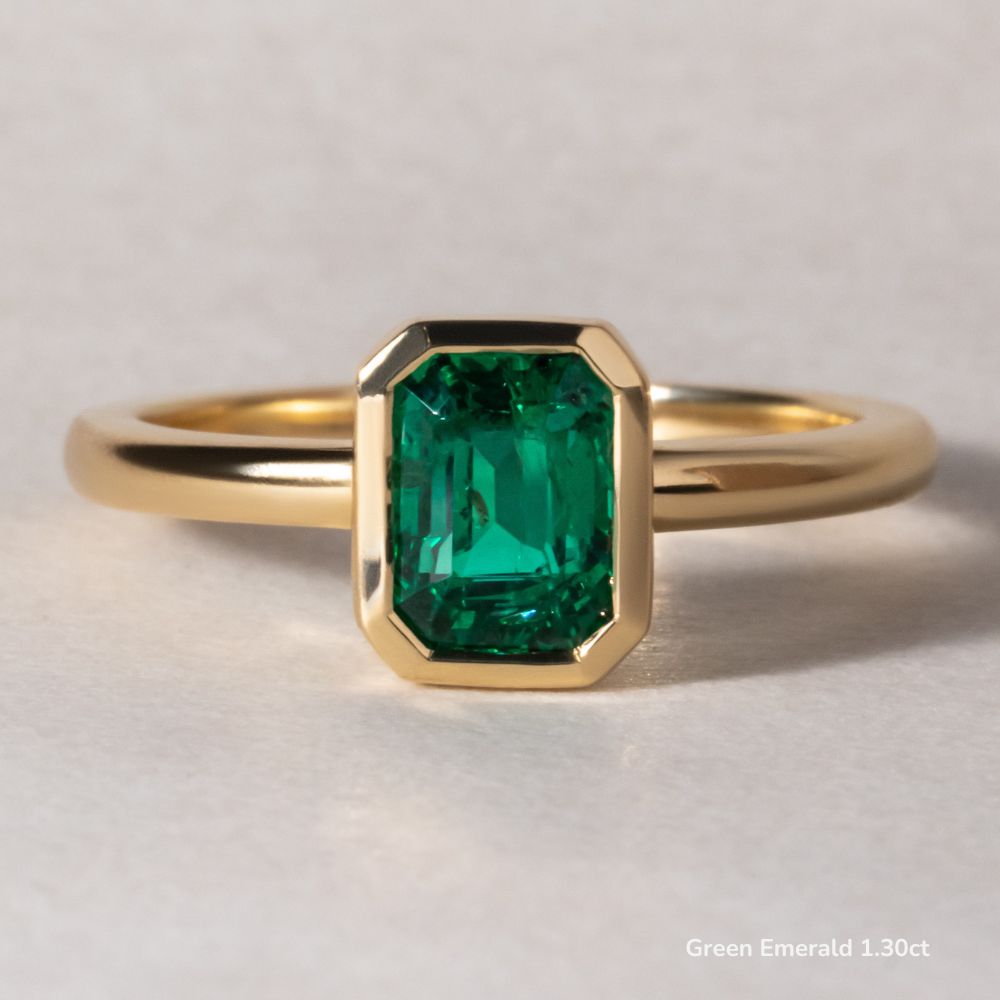
Famous Emeralds and Their Stories
The Chalk Emerald – A 37.8-carat Colombian emerald, once part of an Indian royal necklace, now in the Smithsonian.
The Mogul Mughal Emerald – A 217-carat gem inscribed with Islamic prayers, dating back to 1695.
The Duke of Devonshire Emerald – A massive 1,383-carat uncut emerald from Colombia, displayed in London’s Natural History Museum.
Cleopatra’s Emeralds – The Egyptian queen was known for her vast emerald collection, believing they symbolised power and immortality.
FAQs
Are emeralds rarer than diamonds?
Yes, high-quality emeralds are rarer than diamonds.
Do emeralds scratch easily?
They are durable but softer than diamonds, so they need careful handling.
Are all emeralds treated?
Most are oiled to enhance clarity; untreated ones are very rare.
How can I tell if an emerald is real?
A certified gemologist or lab report (GIA, IGI) can confirm authenticity.
What metal suits emerald jewellery best?
Emeralds pair well with yellow, white, and rose gold, as well as platinum.
What gives emeralds their green colour?
The presence of chromium and vanadium gives emeralds their vibrant green hue.
Do emeralds increase in value over time?
High-quality, untreated emeralds from reputable sources often appreciate in value.
Can emeralds be worn every day?
Yes, but they require careful handling to avoid scratches and damage.
Why do emeralds have inclusions?
Natural inclusions, called “jardin,” are common and help distinguish real emeralds from synthetic ones.
How should I clean my emerald jewellery?
Use warm, soapy water and a soft brush; avoid ultrasonic or steam cleaners.
Which country produces the best emeralds?
Colombia is known for the finest emeralds, followed by Zambia and Brazil.
Are synthetic emeralds real emeralds?
They have the same chemical composition but are lab-grown and less valuable than natural ones.
